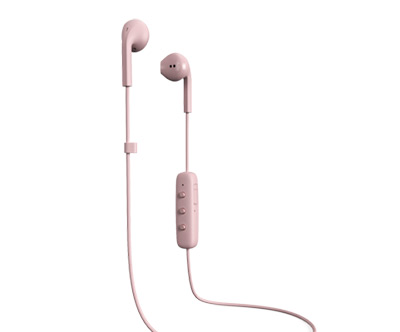 Afrikaans
Afrikaans  Albanian
Albanian  Amharic
Amharic  Arabic
Arabic  Armenian
Armenian  Azerbaijani
Azerbaijani  Basque
Basque  Belarusian
Belarusian  Bengali
Bengali  Bosnian
Bosnian  Bulgarian
Bulgarian  Catalan
Catalan  Cebuano
Cebuano  Corsican
Corsican  Croatian
Croatian  Czech
Czech  Danish
Danish  Dutch
Dutch  English
English  Esperanto
Esperanto  Estonian
Estonian  Finnish
Finnish  French
French  Frisian
Frisian  Galician
Galician  Georgian
Georgian  German
German  Greek
Greek  Gujarati
Gujarati  Haitian Creole
Haitian Creole  hausa
hausa  hawaiian
hawaiian  Hebrew
Hebrew  Hindi
Hindi  Miao
Miao  Hungarian
Hungarian  Icelandic
Icelandic  igbo
igbo  Indonesian
Indonesian  irish
irish  Italian
Italian  Japanese
Japanese  Javanese
Javanese  Kannada
Kannada  kazakh
kazakh  Khmer
Khmer  Rwandese
Rwandese  Korean
Korean  Kurdish
Kurdish  Kyrgyz
Kyrgyz  Lao
Lao  Latin
Latin  Latvian
Latvian  Lithuanian
Lithuanian  Luxembourgish
Luxembourgish  Macedonian
Macedonian  Malgashi
Malgashi  Malay
Malay  Malayalam
Malayalam  Maltese
Maltese  Maori
Maori  Marathi
Marathi  Mongolian
Mongolian  Myanmar
Myanmar  Nepali
Nepali  Norwegian
Norwegian  Norwegian
Norwegian  Occitan
Occitan  Pashto
Pashto  Persian
Persian  Polish
Polish  Portuguese
Portuguese  Punjabi
Punjabi  Romanian
Romanian  Russian
Russian  Samoan
Samoan  Scottish Gaelic
Scottish Gaelic  Serbian
Serbian  Sesotho
Sesotho  Shona
Shona  Sindhi
Sindhi  Sinhala
Sinhala  Slovak
Slovak  Slovenian
Slovenian  Somali
Somali  Spanish
Spanish  Sundanese
Sundanese  Swahili
Swahili  Swedish
Swedish  Tagalog
Tagalog  Tajik
Tajik  Tamil
Tamil  Tatar
Tatar  Telugu
Telugu  Thai
Thai  Turkish
Turkish  Turkmen
Turkmen  Ukrainian
Ukrainian  Urdu
Urdu  Uighur
Uighur  Uzbek
Uzbek  Vietnamese
Vietnamese  Welsh
Welsh  Bantu
Bantu  Yiddish
Yiddish  Yoruba
Yoruba  Zulu
Zulu Choosing the Right Conveyor Idler Rollers for Efficient Material Handling
The Importance of Conveyor Idler Rollers in Material Handling
Conveyor systems play a crucial role in various industries, facilitating efficient material handling and production processes. Among the most vital components of these systems are conveyor idler rollers. These seemingly simple devices are essential for the smooth operation of conveyor belts, impacting everything from efficiency to maintenance costs. In this article, we will explore the significance of conveyor idler rollers, their types, and their applications.
What are Conveyor Idler Rollers?
Conveyor idler rollers are cylindrical components that support and maintain the tension of conveyor belts as they move goods from one location to another. Positioned at specific intervals along the conveyor system, idler rollers help stabilize the belt, reduce wear and tear, and ensure consistent movement of materials. Their design can vary, encompassing different sizes, materials, and shapes to suit specific operational needs.
Types of Conveyor Idler Rollers
There are several types of idler rollers, each designed for particular applications
1. Crowned Idler Rollers These rollers have a slight crown or arc at their center, helping to keep the belt aligned. They are beneficial in preventing belt misalignment, which can lead to damage and increased operational costs.
2. Flat Idler Rollers As the name suggests, these rollers feature a flat surface and are often used in applications where the belt does not require extra guidance. They provide a stable platform for the belt to travel over.
3. Impact Idler Rollers These rollers are specially designed to absorb the shock that occurs when heavy materials fall onto the conveyor belt. They are usually placed at loading zones to prevent damage to the belt and other components.
4. Return Idler Rollers Located on the return side of the conveyor, these rollers support the belt as it returns to its starting point. They help maintain the belt's tension and prevent sagging.
conveyor idler rollers

5. Self-Aligning Idler Rollers These rollers have the ability to adjust their position automatically based on the belt's alignment, helping to reduce maintenance needs and extend belt life.
Key Benefits of Conveyor Idler Rollers
The importance of conveyor idler rollers cannot be overstated. Here are some key benefits they provide
- Enhanced Efficiency By supporting the conveyor belt and allowing it to travel smoothly, idler rollers contribute to the overall efficiency of material handling systems. This enhanced efficiency can directly influence productivity levels in a facility.
- Reduced Wear and Tear Idler rollers help reduce friction between the belt and the supporting structure, minimizing wear and tear on both the belt and the rollers themselves. This longevity leads to lower maintenance costs and less frequent replacements.
- Improved Reliability A properly functioning conveyor system with effective idler rollers is less prone to breakdowns and disruptions. This reliability is crucial for industries that rely on continuous operations.
- Cost-Effectiveness While the initial investment in high-quality idler rollers might be significant, the long-term savings in maintenance, repairs, and replacements make them a cost-effective choice.
Conclusion
Conveyor idler rollers may seem like minor components, but their impact on the efficiency and reliability of conveyor systems is profound. By ensuring smooth movement, reducing wear and tear, and providing necessary support, they are indispensable in various industries, including manufacturing, mining, and logistics. As technology advances, the design and materials used for idler rollers continue to improve, promising even greater efficiency and durability for the future of material handling. Companies investing in high-quality idler rollers will likely see significant returns in productivity and cost savings, further solidifying their importance in the world of logistics and manufacturing.
-
Revolutionizing Conveyor Reliability with Advanced Rubber Lagging PulleysNewsJul.22,2025
-
Powering Precision and Durability with Expert Manufacturers of Conveyor ComponentsNewsJul.22,2025
-
Optimizing Conveyor Systems with Advanced Conveyor AccessoriesNewsJul.22,2025
-
Maximize Conveyor Efficiency with Quality Conveyor Idler PulleysNewsJul.22,2025
-
Future-Proof Your Conveyor System with High-Performance Polyurethane RollerNewsJul.22,2025
-
Driving Efficiency Forward with Quality Idlers and RollersNewsJul.22,2025





























